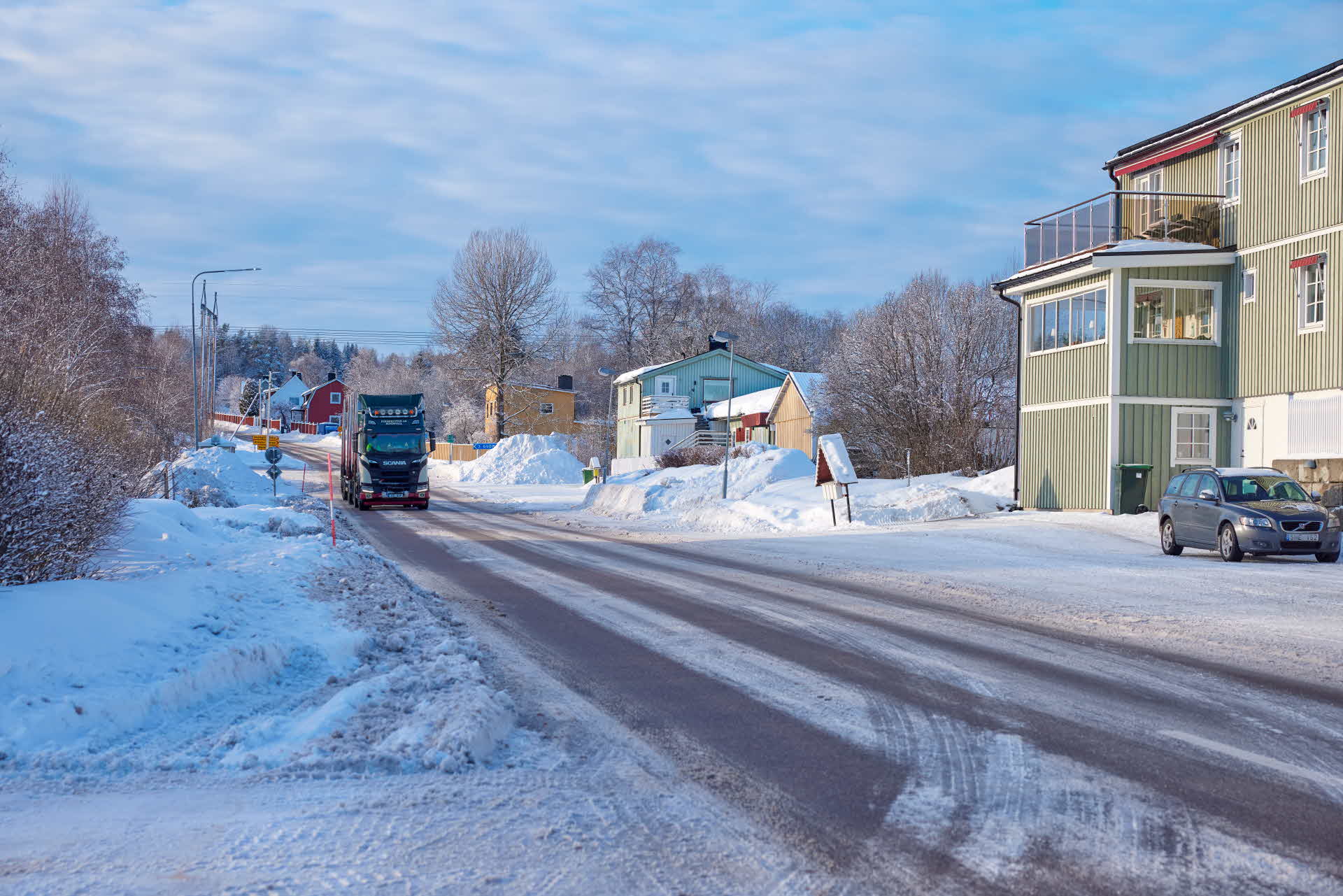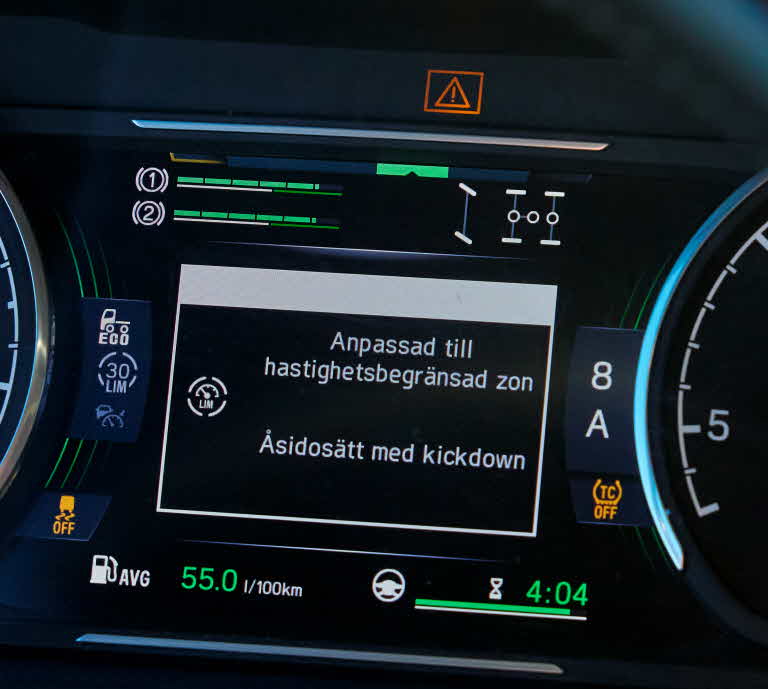
- ABOUT SCA
- INNOVATION AND RESEARCH
- FOREST INNOVATIONS
- GEOFENCING SPEED REDUCTION
Automated speed reduction
We are continuing our efforts to promote safer timber transport in Northern Sweden. Geofencing is a technology that automatically reduces vehicles' speed when they enter a specific area. During 20023 SCA and the Swedish Transport Administration tested geofencing in about 40 timber trucks that travel along selected roads in Jämtland and Västernorrland.
SCA Forest has been working extensively to improve the safety of timber transport for several years. Under the heading of ‘Inte en till’ (No more accidents), we’ve been working intensively with safety together with the haulers who drive for us, in regard to how their operators drive and their work environment outside the vehicle. With geofencing, we can now test a technology that can make it easy for the villages and areas where we operate, so they can feel more secure with our timber transports.
The project were performed during 2023, but SCA had decided to continue using the technique and involve new roads. Geofencing is a service that uses GPS technology to create a virtual boundary or fence, enabling the vehicle to perceive the specific conditions for a specific geographical area as it approaches and enters the area.
Important for road safety

This is the biggest geofencing project in Sweden to date in terms of number of heavy vehicles. SCA and the Swedish Transport Administration have selected four towns/sections of road: Laggarberg and Järnvägsgatan in the Timrå area, and Rissna and Hällesjö in Jämtland. These sections range from 500 meters to 2.2 kilometers and the programmed speed will be 30-50 km/h.
"These selected areas are particularly sensitive in terms of road safety, with heavy traffic on narrow roads that are close to schools and other buildings. Even though the timber trucks don’t exceed the speed limit, they are perceived as big, heavy and fast and possibly scary when they drive past, so this is an important contribution to the local communities,” says Lars Nolander, Logistic manager SCA Skog.
When the driver of a timber truck enters the geographic area, the accelerator pedal will ‘slacken’ if they are driving faster than the programmed speed for the section. The driver can override the system, however, by fully depressing the accelerator pedal. Nothing will happen if the vehicle is traveling slower than the programmed speed. It’s important that the drivers can override the system though, in case they have to accelerate for some reason. But the aim is obviously that it won’t be needed.
Major backing from haulers
Many of SCA's haulers are taking part in the pilot project. About 40 timber trucks from four haulers are engaged – Fermgruppen in Sundsvall, Bispgården åkeri, Själanders åkeri and Näslunds Transportservice. All of the participants drive Scania trucks with the optional Scania-zone service, which is the technical solution used in this project.
“We are working hard to improve safety for our employees. This new technology is an exciting way to improve safety for our drivers, as well as other road users and local residents,” says Petter Näslund, owner of Näslunds Transportservice, which is taking part in the project with all of its five timber trucks and ten drivers.
Good results
Drivers who have participated in the project for a year have expressed that they don’t want to be without the system now that they’ve tried it. The technology assists during driving and contributes to improving traffic safety, making it safer for everyone involved.
In addition to the drivers appreciating driving with the system, the pilot project has shown positive results in terms of increasing compliance with speed limits on the roads, which is the main goal of the project according to Trafikverket. Across all routes, the results indicate that compliance with speed limits is higher for vehicles equipped with the speed limitation system compared to those without it. This demonstrates that the system has significant potential to enhance safety in currently vulnerable road environments.
SCA is very pleased with the results and plans to continue using the technology even after the pilot project ends. They also have the ambition to expand the number of routes with speed-limiting zones.
"Our idea is to involve more haulage companies and activate new routes. The technology is easy to implement, and it’s already available in all new Scania trucks, so why not utilize it? Additionally, I hope that more truck manufacturers will follow suit," summarizes Lars Nordlander, Logistics Manager at SCA Skog
Photo: Olle Melkerhed